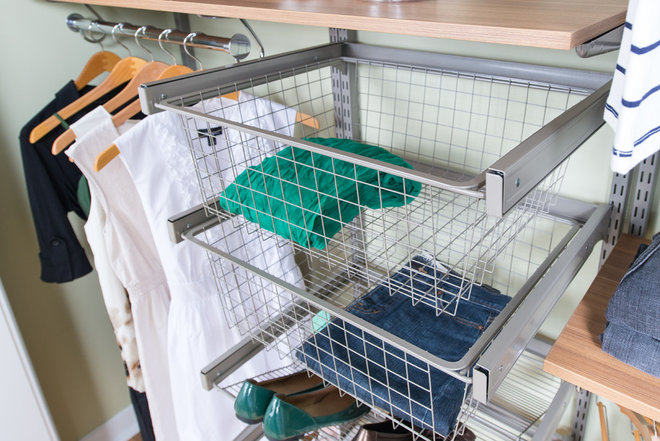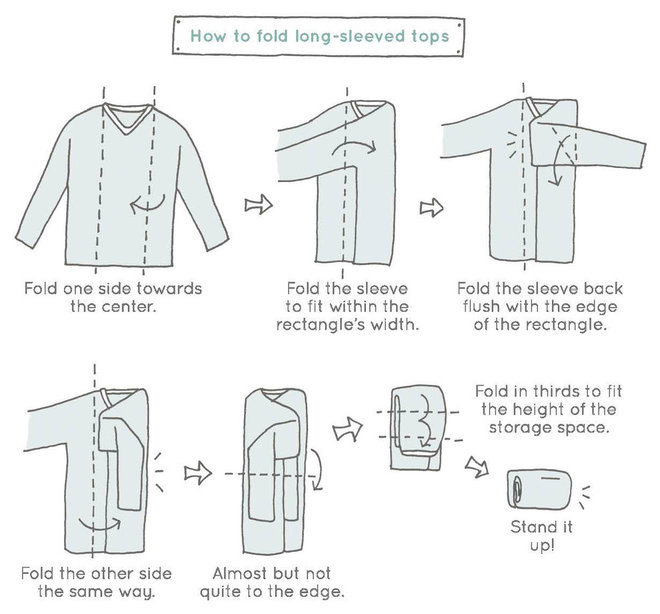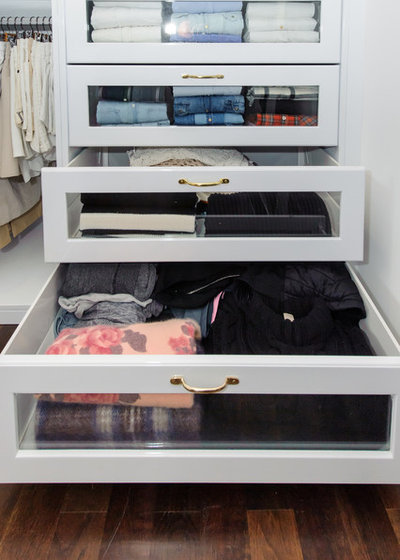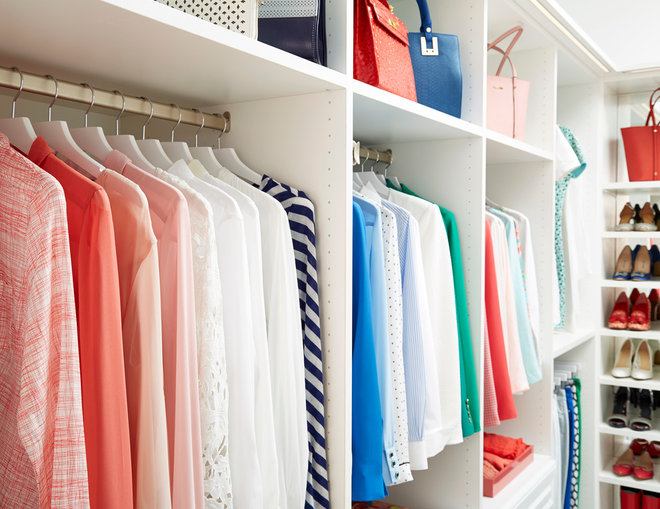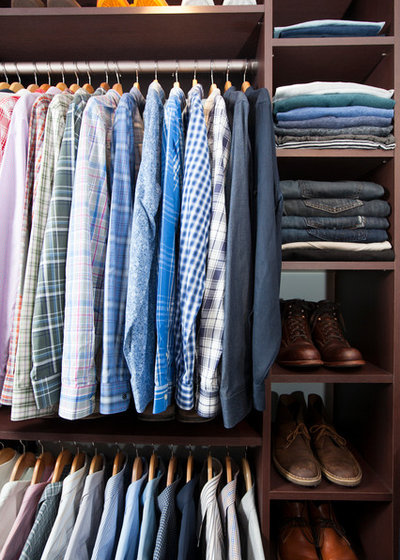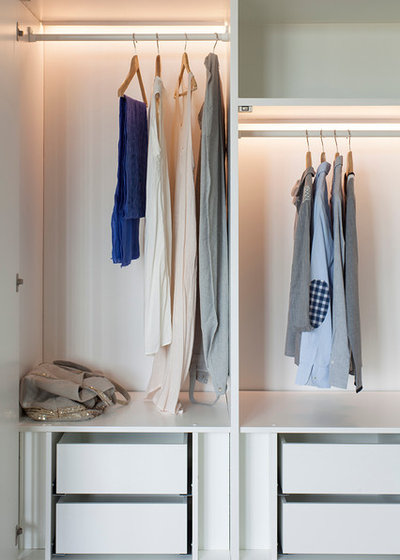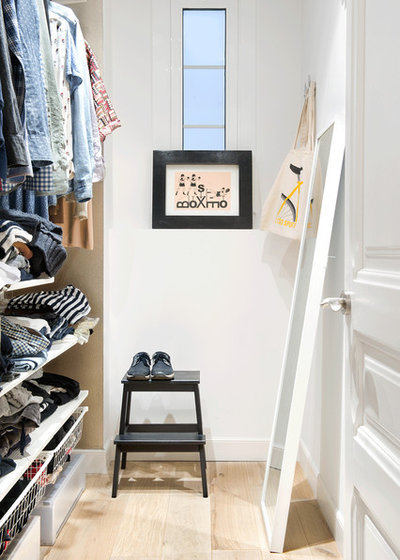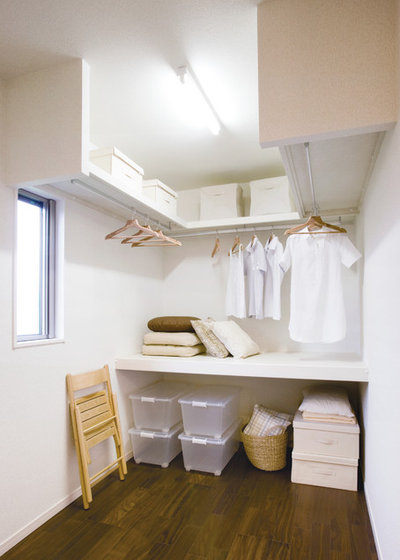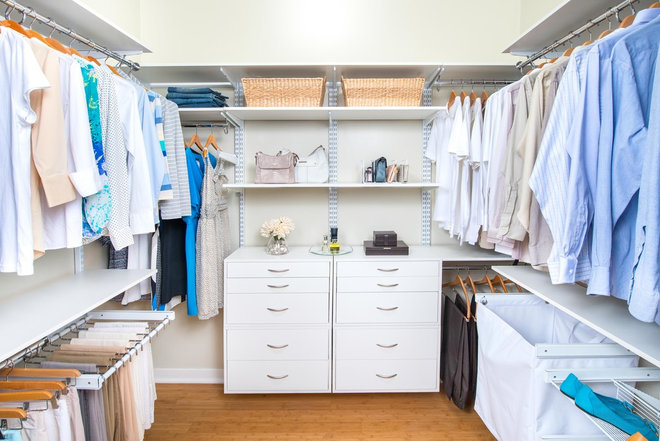If you’ve ever had the shoulders of a favorite sweater stretched out by a hanger, or pulled a hopelessly wrinkled shirt out of a drawer, you know how important it is to get clothing storage right. The shift in seasons is a good time to reassess your wardrobe and the way you store your clothes. Read on for the how-to on what to fold, what to hang and where to stash your off-season gear.
What to fold: Anything that can easily stretch out, such as sweaters, knits, T-shirts and sweats, should be folded rather than hung, because folding puts less stress on these materials. Sturdy items like denim, cords and khakis also do well folded.
What to hang: Garments that wrinkle easily, like suits, dresses, blouses, dress shirts and anything made of pure linen, are best kept on hangers.
Storage note: Wire drawers like the ones shown here are wonderful because they allow you to see what’s inside at a glance, but because they can leave indentations in very soft materials, they’re best for sturdier garments like jeans.
What to hang: Garments that wrinkle easily, like suits, dresses, blouses, dress shirts and anything made of pure linen, are best kept on hangers.
Storage note: Wire drawers like the ones shown here are wonderful because they allow you to see what’s inside at a glance, but because they can leave indentations in very soft materials, they’re best for sturdier garments like jeans.
How to fold tops and bottoms: Try the KonMari Method, in which the items are folded to stand upright rather than be stacked after folding. Not only is this a more efficient use of space, it’s much easier to find things because you can see everything quickly. To try this at home, start by folding the edges of your garment in toward the center to form a rectangle. Then fold the rectangle in half or in thirds until it feels firm and stable enough to stand on its own.
How to fold cashmere sweaters: Garments with delicate fibers like cashmere deserve special attention. You can follow the same basic KonMari folding method described previously, but only fold the rectangle in half once. It’s not necessary, but if you want to go the extra mile, place a length of fresh tissue paper on top of the garment before folding. The tissue will help make the folds gentler, protecting the cashmere.
How to fold lingerie: As some of the most delicate items in your wardrobe, bras and underwear should be treated kindly. Don’t overcrowd the drawer, and line up bras with the cups facing the same direction. Underwear and socks can be folded or rolled. Using simple drawer dividers will keep everything orderly.
How to store off-season clothes: Choose a storage space that’s clean and stays cool, dark and dry, and be sure to clean each item before storing. Before choosing a storage method, consider whether you might want to retrieve any items between seasons — for instance, if you like to wear some of your winter sweaters on chilly days in early spring and again in the fall. If that’s the case, try to find a place removed from the current season’s clothes yet still accessible, like in under-bed storage drawers or a dresser in a hall closet.
How to choose storage containers: Clothing (particularly when made of natural fibers) likes to breathe, but it also needs some protection from dust and bugs, and that can make choosing the right storage containers a bit tricky.
- Canvas hanging bags are a good choice for keeping off-season coats, dresses, suits and jackets neat and dust-free — plastic versions don’t allow the material to breathe.
- Use air-vacuumed plastic storage bags sparingly. While they’re great for some items, they can really squash your clothing, and it can be a pain to open and reseal them, which doesn’t make sense if there’s a chance you’ll want to wear the item between seasons.
- Plastic tubs can be a good bug-proof solution, but these can trap moisture in warm climates and don’t allow natural fibers to breathe.
- Sturdy canvas storage boxes, which come in various sizes (including under-bed boxes) are good for storing sweaters, tees and jeans, and most come with a slot for placing a label of the contents.
Putting it all together: drawers, shelves, hangers and boxes. No matter the size of your closet, having a combination of these four main types of storage options is the best way to care for all of your clothes. In a small closet, you could have a short double hanging rod with high shelving above, dresser drawers in the bedroom and storage boxes under the bed. In a large walk-in closet, you could have all these components in one space.

